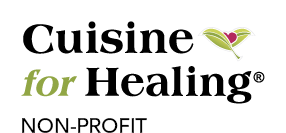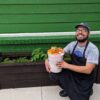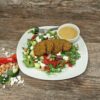
So, what the heck is a probiotic anyway?
Probiotics are defined as live microorganisms that are believed to provide health benefits when consumed.[1][2] The term probiotic is currently used to name ingested microorganisms associated with benefits for humans and animals.[3] The term came into more common use after 1980. The introduction of the concept (but not the term) is generally attributed to Nobel laureate Élie Metchnikoff, who postulated that yogurt-consuming Bulgarian peasants lived longer lives because of this custom.[4] He suggested in 1907 that “the dependence of the intestinal microbes on the food makes it possible to adopt measures to modify the flora in our bodies and to replace the harmful microbes by useful microbes.
In everyday terms this means that your gut is composed of trillions of bacteria- the good kind. When we take antibiotics or eat processed foods that contain antibiotics and chemicals we destroy this garden of goodness. It has a very fine balance and we now know that most disease starts in the gut. This is actually the home of your “second brain.” Not kidding- have you heard of that “gut feeling?” This is a real thing. Communication must exist between the gut, the brain and cells to effectively digest food needed for fuel and information like vitamins, minerals and antioxidants.
Once you have planted your healthy gut garden, you need to fertilize it and keep it going. In comes prebiotics.
Prebiotics are food ingredients that induce the growth or activity of beneficial microorganisms (e.g., bacteria and fungi).[1] The most common example is in the gastrointestinal tract, where prebiotics can alter the composition of organisms in the gut microbiome.
In diet, prebiotics are typically non-digestible fiber compounds that pass undigested through the upper part of the gastrointestinal tract and stimulate the growth or activity of advantageous bacteria that colonize the large bowel by acting as substrate for them.[1] They were first identified and named by Marcel Roberfroid in 1995.[1][2] As a functional food component, prebiotics, like probiotics, are conceptually intermediate between foods and drugs.
Boosting the Gut Microbia
Prebiotics and probiotics are both used to boost the health of the gut microbia, the beneficial bacterial colonies that live in the human digestive tract. The body contains more than 1,000 different varieties of bacteria, and the maintenance of microbes in the body is essential for overall health. Some of the specific jobs of gut bacteria include aiding the immune system in fending off invading microorganisms, helping the body digest specific foods, reducing gut inflammation and synthesizing necessary vitamins. The specific ratio of two groups of bacteria in the gut, Bacteroidetes and Firmicutes, may also play a role in obesity.
How Prebiotics and Probiotics Work
Probiotics typically include live colonies of the bacterial strains lactobacilli and bifidobacteria. Because probiotics are living organisms, excessive heat can destroy them and render them useless as well as stomach acid in some cases. When consumed, probiotics travel through the digestive tract and take up residence there.
Prebiotics are typically made up of nondigestible carbohydrates, such as inulin and galacto-oligosaccharides, compounds that can be broken down by gut bacteria but not by the human digestive tract. These compounds are extracted from food or supplements by bacteria residing in the gut as the food makes its way through the intestines and colon. The natural gut microbes use the prebiotics to enhance their own growth.
Probiotics and Prebiotics in Supplements and Food
Both prebiotics and probiotics can be found naturally in some foods, and they are also frequently added to foods or consumed in supplement form. Common foods containing probiotics include yogurt, unpasteurized sauerkraut and kefir. Only products that are labelled as containing live and active cultures actually contain probiotics; frozen yogurt and processed foods made with yogurt do not.
Foods with prebiotic ingredients include onions, garlic, honey, bananas, soybeans, leeks and whole grains. Probiotic and prebiotic supplements are both available in tablet, capsule and powder forms for people who want to add more to their diets than food sources alone can provide.
So- once again we are back to healthy, real food grown with integrity that contains quality fuel and information. You can take a million supplements, but nothing takes the place of good food. this is what your body understands.
If you really love this and want to learn more, join me on September 9th at our 8th Ave office from 11:30a to 1:00p for a talk about creating a healthy gut. You will get a fabulous box lunch and a roadmap to gut health.
Need to stock up on some quality healthy food? Hurry over to Cuisine for Healing! We have lots to choose from.
Happy Healthy Eating, Dana
http://www.ehow.com/about_5553337_difference-between-probiotics-prebiotics.html
https://en.wikipedia.org/wiki/Probiotic









